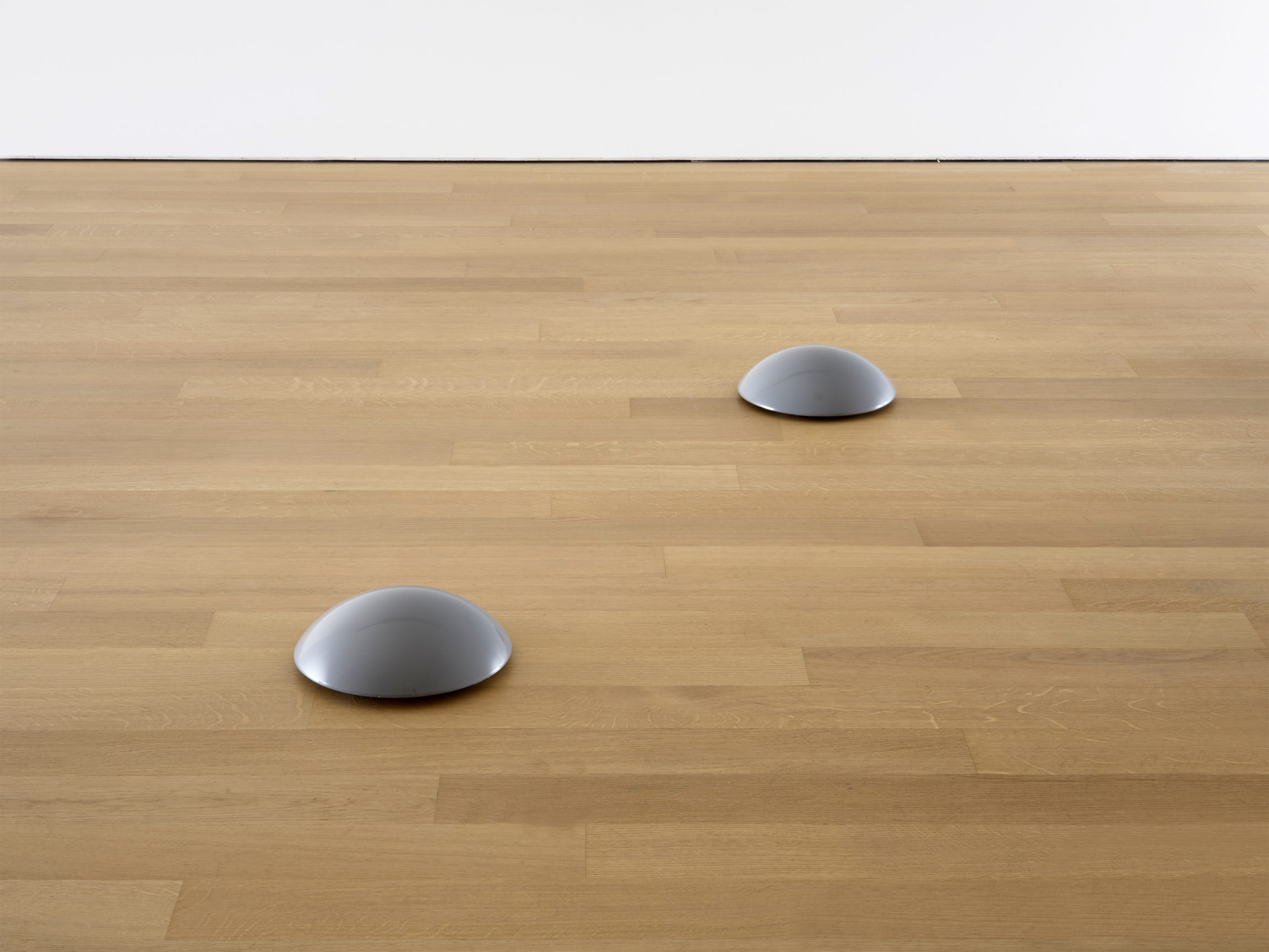Bibliography
Barbara Rose, Tony DeLap Painting: Sculpture and Works on Paper 1962-2013, Santa Fe, Radius Books, 2014.
Yves Aupetitallot and Catherine Lepdor (eds.), g.p. 1.2.3. Le Salon international de galeries-pilotes à Lausanne 1963 1966 1970/The International Show of Pilot Galleries at Lausanne 1963 1966 1970, exh. cat. Lausanne, Musée cantonal des Beaux-Arts, 2002, n. 2.
René Berger, 2e Salon international de galeries-pilotes: artistes et découvreurs de notre temps, exh. cat. Lausanne, Musée cantonal des Beaux-Arts, 1966: 44-45.




In 1952 Robert Breer started making films parallel to his practice of painting. The first of these, Form Phases I, shows his interest in movement and transversality between mediums. In the mid-1960s he conceived the first of what he calls his Floats (in the sense of both buoyant vessels and carnival vehicles) – small, dome-like sculptures moved by a motor (their size and form would evolve over the years). Their movement is slow and hard to perceive. It follows no predetermined itinerary. The Floats are not immediately visible, and only an attentive viewer will be aware of their motion.
The Floats create fixed points in the exhibition room. With each position, they invite viewers to look at the spatial field from a new perspective, like these Jumelles, which move autonomously and randomly in relation to each other: viewers see the relation between them as soon as they become aware of their presence. The dynamic of the site is thus renewed not only by their co-presence but also by their successive positions.
Unlike some Floats that stand out by their bright colour and that Breer liked to show at eye level, the neutral character of the Jumelles, of their form and colour, and the fact that they are placed on the ground, without a base, evokes the minimalist sculpture that developed in New York, where the artist lived from 1959, when he returned to the United States after ten years in Paris. These works should be also viewed as a caustic commentary on this artistic tendency, even if the Floats themselves engage in the same reflection on the space of the beholder as its proponents.